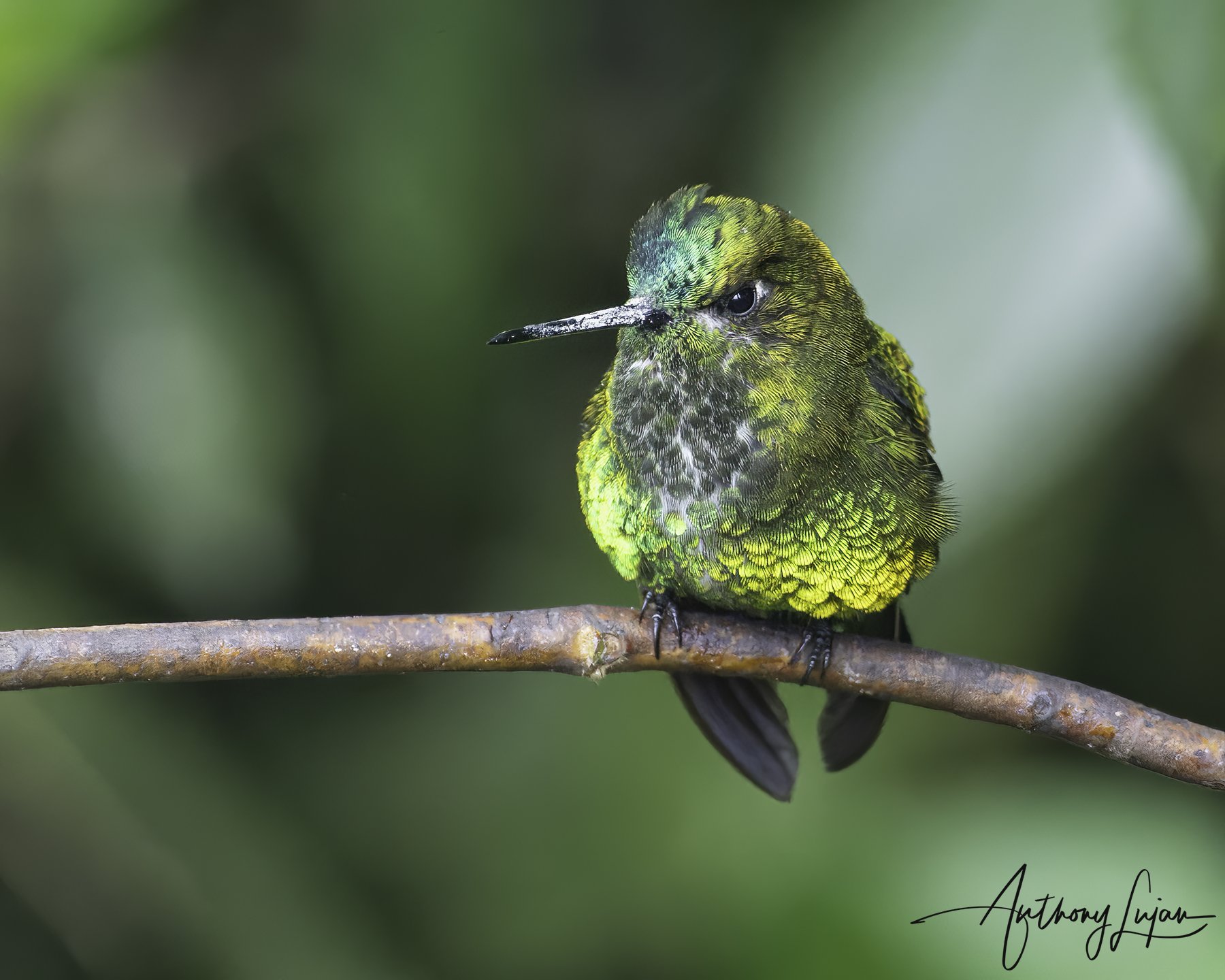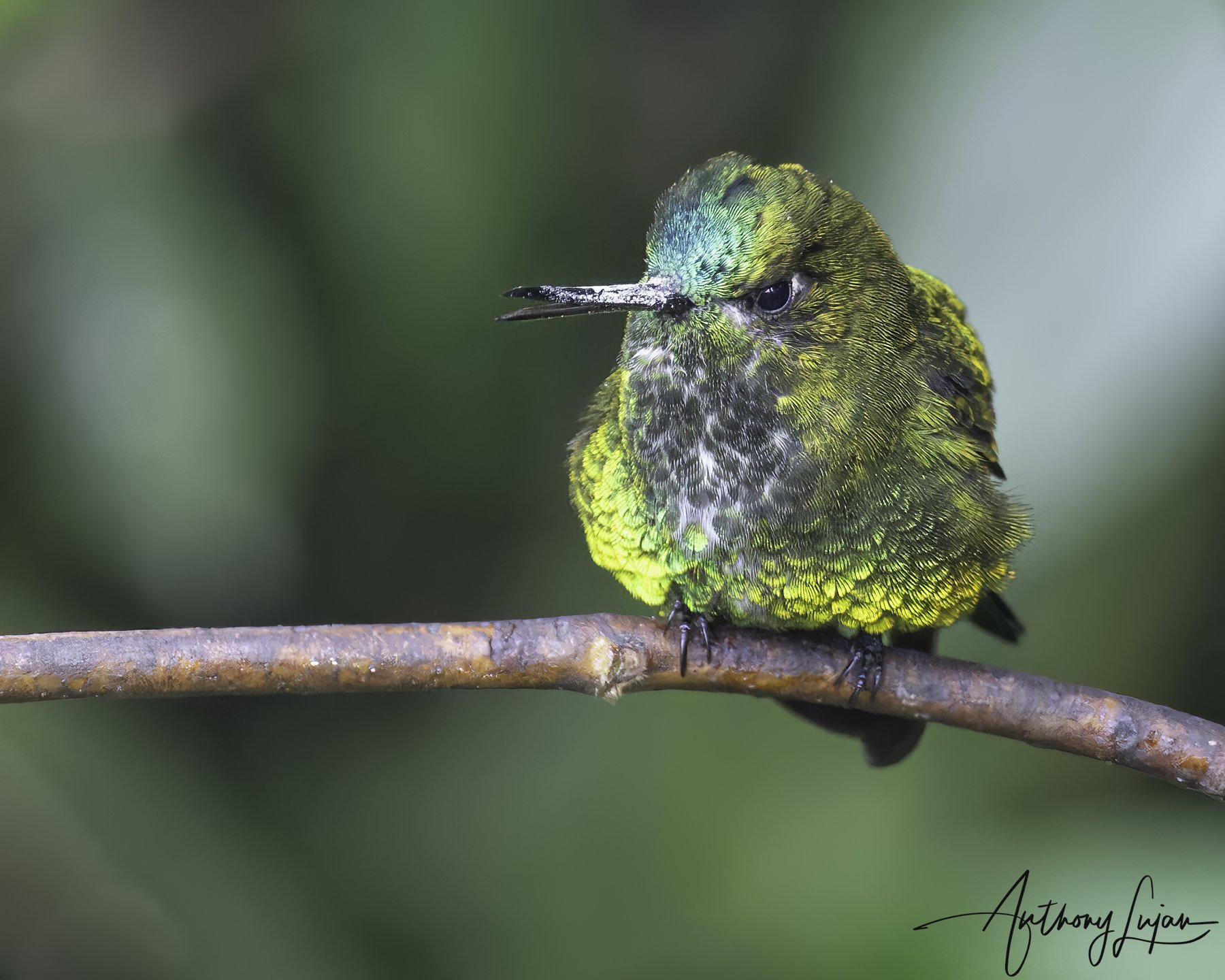Black-thighed Puffleg
Black-thighed Puffleg (Eriocnemis derbyi)
Name Origin:
The genus name Eriocnemis comes from the Greek erion meaning “wool” and knemis meaning “leg armor,” referring to the fluffy leg tufts that define the puffleg group. The species name derbyi honors Edward Smith-Stanley, the 13th Earl of Derby, a British naturalist and collector known for his vast zoological collections.
Quick Facts
🪶 Length: 8–9.5 cm (3.1–3.7 in)
⚖️ Weight: 4–5.5 g (0.14–0.19 oz)
🌎 Range: Andes of Colombia and Ecuador
🧭 Elevation: 2,500–4,000 m (8,200–13,120 ft)
🌸 Diet: Nectar and small arthropods
🏡 Habitat: Montane and elfin forest edges, shrublands, and páramo zones
🧬 Clade: Heliantheini "Brilliants" (high-Andean hummingbirds)
📊 Status: Least Concern (IUCN)
Subspecies & Distribution
Monotypic species with no recognized subspecies.
Distribution: Occurs in the western and central Andes of Colombia, from Antioquia south to Nariño, and in the Andes of northern Ecuador, from Carchi south to Cotopaxi. Inhabits humid montane and elfin forests and páramo edges between 2,500 and 4,000 meters.
Species Overview
The Black-thighed Puffleg is a radiant Andean hummingbird found in high-elevation forests and páramo margins of Colombia and Ecuador. Named for its distinctive black feather tufts on the thighs, it is an unmistakable bird that glows with metallic green brilliance as it hovers among mountain flowers in the misty slopes of the Andes.
Male Description:
The male displays bright emerald-green plumage, black thigh puffs, and a shimmering turquoise-green breast. The tail is dark bronzy-green, and the bill is straight and black. In good light, the entire plumage gleams vividly, contrasting sharply with the black leg tufts that give the species its name.
Female Description:
The female is similar in appearance but has slightly duller green upperparts, smaller black leg tufts, and grayer underparts. Her tail is shorter and more rounded, and she forages at slightly lower levels in the vegetation than the male.
Habitat & Behavior:
This puffleg inhabits humid montane and elfin forests, forest edges, and shrubby páramo slopes. It feeds mainly on nectar from Chuquiraga, Brachyotum, Fuchsia, and other high-elevation flowers, and supplements its diet with small insects. Males often defend flower patches, engaging in short but intense chases. The species is adapted to cold, high-elevation environments and is most active during early morning and late afternoon.
Conservation Note:
The Black-thighed Puffleg is listed as Least Concern by the IUCN and remains fairly common in suitable habitat. However, deforestation, agricultural expansion, and burning of high-elevation shrublands threaten local populations. Conservation of cloud forest corridors and páramo vegetation is key to ensuring the survival of this distinctive Andean hummingbird, a true gem of the Heliantheini clade.







Checkout Anthony’s playlist of this species! Click the top right dropdown to see all the videos.

